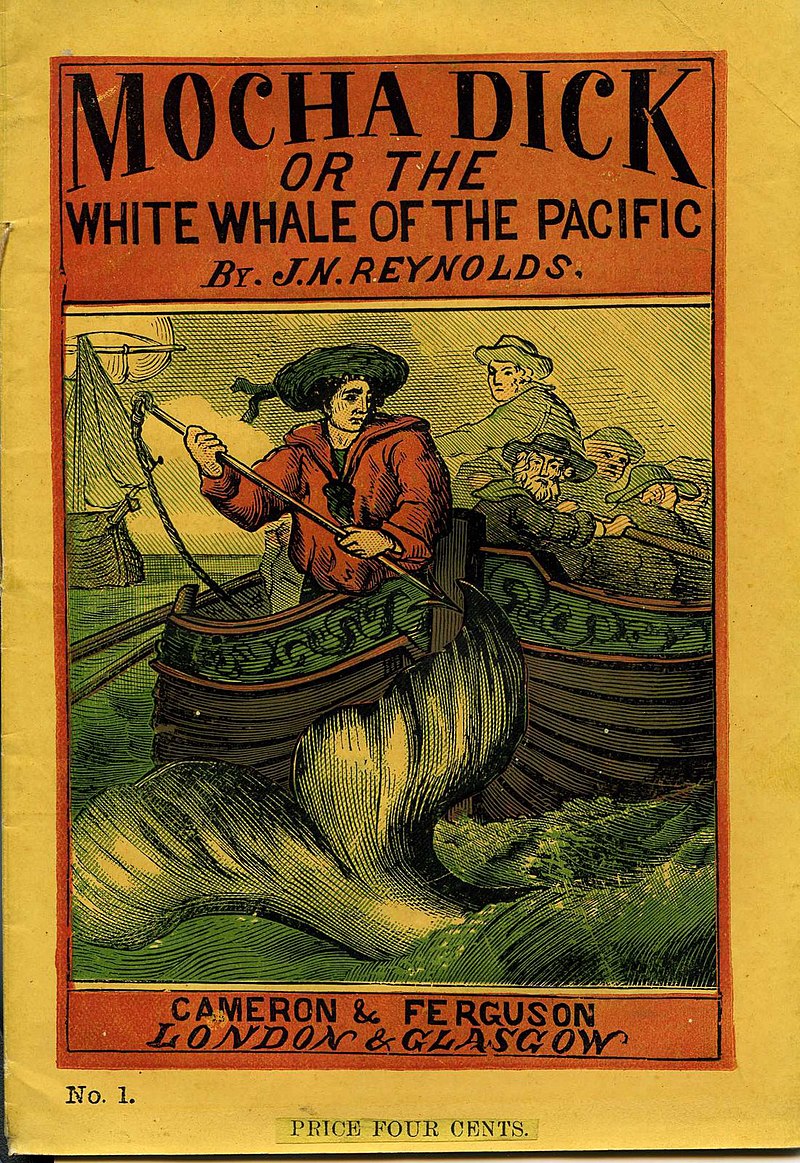Mocha Dick

Mocha Dick (/ˈmɒtʃə dɪk/), who died in 1838, was a legendary rogue male sperm whale (Physeter macrocephalus), notable for his unusual white coloration—either albino or possibly leucistic. He was most often seen in the early 19th century near Mocha Island, off the central coast of Chile, in the southeastern Pacific Ocean. His story was famously recorded by American explorer and author J. N. Reynolds in Mocha Dick: Or the White Whale of the Pacific: A Leaf from a Manuscript Journal, published in the May 1839 issue of The Knickerbocker. This account would later serve, at least in part, as inspiration for Herman Melville’s Moby-Dick, published in 1851.
Mocha Dick was a survivor of more than 100 encounters with whaling ships, according to Reynolds. Enormous and powerful, he could destroy small boats with his massive tail. Though often calm—even swimming peacefully beside vessels—he became terrifyingly aggressive when provoked, responding with fierce intelligence and strength. He was especially feared by whalers for his violent breaching, sometimes launching his entire body out of the water when enraged.
Reynolds described Mocha Dick as “an old bull whale, of prodigious size and strength... white as wool.” His head was encrusted with barnacles, giving him a rugged, battle-worn appearance. Unlike most sperm whales, whose spouts are angled and short, Mocha Dick expelled water straight upward in a towering, thunderous column, sounding like steam blasting from a locomotive’s safety valve.
He was likely first attacked before 1810 near Mocha Island, and news of his survival and distinctive appearance spread quickly among Nantucket whalers, many of whom tried to hunt him after rounding Cape Horn.
According to Reynolds, Mocha Dick met his end in 1838 after seemingly coming to the aid of a distressed female whale whose calf had been killed by whalers. In the fight that followed, he was finally slain. His carcass measured 70 feet in length and yielded 100 barrels of oil, as well as ambergris—a valuable substance used in perfumes, sometimes worth more than gold. His body also contained 20 old harpoons from previous failed hunts.
Remarkably, a decade later, The Knickerbocker published a report of another sighting of Mocha Dick in the Arctic Ocean, ending the article with a bold salute: “Vive Mocha Dick!”